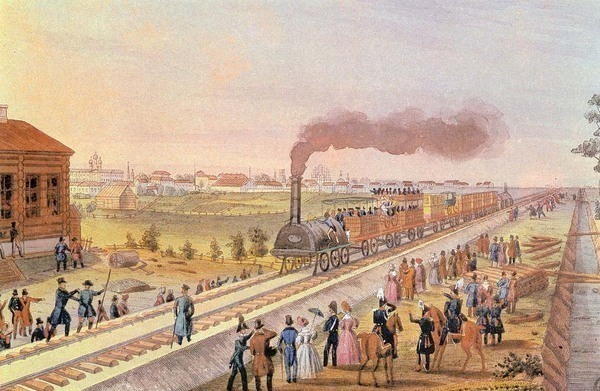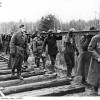Choosing a standard

Arrival of the first train from St. Petersburg to Tsarskoe Selo on October 30, 1837.
Like many nations, the Russian empire did not adopt a standard gauge when it first started building railways. Instead, it built lines individually, according to the recommendations of the engineers it consulted.
The Austrian engineer Franz Gerstner built the first railway line in the Russian Empire from St. Petersburg to Pavlovsk through the royal residence in Tsarskoye Selo in 1837; this line had a gauge of 1828 mm (six feet). The second line, from Warsaw to Vienna, was built in 1845 using the Stephenson gauge of 1435 mm (4 ft. 8 ½ in.).
The gauge of 1524 mm (five feet), was proposed by George Whistler, a prominent American railroad engineer (and father of the famous painter, James Abbot McNeill Whistler), who had been contracted as a consultant on Moscow–St. Petersburg line. Whistler claimed "it is not necessary in this case to adhere to the precise dimension of 4 ft. 8 ½ in. for the purpose of connecting with other roads."
The next 150 years have proved him wrong. As the Western political boundaries of the Russian Empire and later the Soviet Union have shifted, major efforts have gone into shifting the railways gauges as well.

How to cite this page
Slawomir Lotysz, 'Choosing a standard', Inventing Europe, http://www.inventingeurope.eu/story/choosing-a-standard
Sources
- Puffert, Douglas J. Tracks across Continents, Paths through History: The Economic Dynamics of Standardization in Railway Gauge. Chicago: University of Chicago Press, 2009.



















